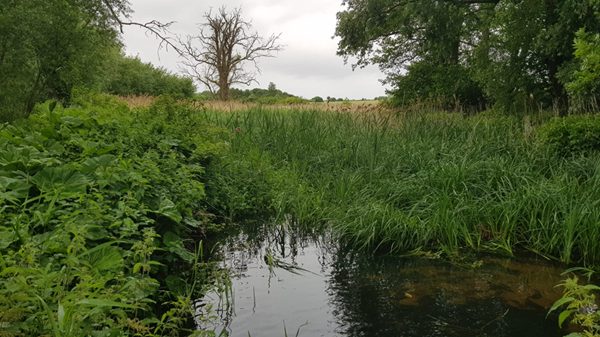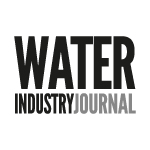By Paul Pickard
The poor condition of the UK’s watercourses, the potential impacts upon human health, and the effects on our native ecology are widely publicised. Recent government statistics show that only 14% or rivers and lakes achieve good ecological status, and 0% achieve good chemical status when persistent, bio-accumulative, toxic substances are included. In recent years, media coverage has brought the subject to the forefront of public discourse, often demonising water companies, but the UK water industry has been aware of the situation for many years and is investing money in investigating and mitigating the effects.
UK Water Industry Research (UKWIR) has been supporting the water industry with the Chemical Investigations Programme (CIP) since 2010. The first iteration, CIP1, was focused on investigating the extent to which wastewater discharges may contribute to chemical concentrations in rivers. The programme has continued and expanded with each new water industry AMP cycle, adding new investigations each time, in response to emerging threats. CIP4 began in early 2025 with a wider variety of investigations than ever.
SUEZ’s UK-based wastewater sampling operation is supporting several strands of the CIP4 investigations. This article focuses on the Integrated Constructed Wetlands (ICW) investigation within the CIP4 programme.
The potential of constructed wetlands
Integrated Constructed Wetlands (ICWs) are increasingly recognised as a vital element of wastewater treatment system in the UK. They can effectively support conventional wastewater treatment plants to enhance overall performance or, in some cases, offer a viable standalone alternative, particularly in rural and decentralised catchments. As passive, nature-based systems, ICWs apply treatment mechanisms occurring in natural wetlands such as sedimentation, microbial degradation, plant uptake, and filtration through substrates to treat wastewater. This allows for low energy input, minimal mechanical infrastructure, and reduced operational and maintenance costs. Additionally, ICWs offer ecological co-benefits, including habitat creation and improved landscape aesthetics. However, there is an urgent need to improve our understanding and optimise ICWs’ capacity to remove new and emerging substances. This is essential for adapting these systems to a changing regulatory landscape, addressing public concerns, and strengthening ICW’s role in environmental protection.
The ICW investigations are led by Professor Barbara Kasprzyk-Hordern and her team at the University of Bath, in collaboration with the UK Centre of Ecology and Hydrology (UKCEH). SUEZ have been contracted to provide specialist sampling services which will generate the necessary samples for analysis by the academic partners.
SUEZ’s role in wetland sampling
The objectives of the investigation are to conduct comprehensive chemical and biological profiling across various ICW matrices such as water phase, sediments and plants leading to enhanced understanding of the fate of these substances in ICWs. This requires SUEZ to undertake monthly sampling of incoming and outgoing water, and quarterly sampling of sediments and plants, until March 2027. To ensure high quality data output, obtained composite samples are immediately transferred into a mobile freezer and transported to SUEZ premises in Wakefield. On a monthly basis, samples are distributed by SUEZ drivers to the various academic institutions conducting the analysis.
SUEZ worked with Franciszek Bydalek from the University of Bath to develop bespoke sampling methods and fabricate innovative sampling equipment, which would allow samples to be successfully extracted without damaging the integrity of the wetland or negatively impacting the local environment. SUEZ employed the use of 3D printing to manufacture certain components of the sampling equipment, ensuring compatibility with modified lengths of plastic pipe and metal tubes which were used to create sediment coring devices. Materials selected for the construction of sampling equipment had to have no potential for cross-contamination of samples, or contain any chemicals which would be detrimental to the environment. This is particularly important when using sediment corers where the abrasive action between the sediment and the corer surface can cause small amounts of the corer material to be incorporated into the sample. This can lead to contamination such as metal corers may release trace metals, compromising samples intended for metals analysis, while plastic corers may shed compounds such as plasticisers, interfering with organic chemistry analyses.
Challenges in wetland fieldwork
The sampling itself is managed by Ryan Tonge, one of the Project Managers at SUEZ’s Wakefield division, and undertaken by a dedicated team of SUEZ Sampling Technicians. Several challenges have had to be overcome in the first few months of the project, including head-height vegetation covering bankside paths, nesting birds preventing access to some wetland cells, and 35C heat causing sampling staff to seek refuge in the back of a refrigerated van. Needless to say, the heat of June will be looked back upon fondly next January when sampling staff are faced with the prospect of long hours spent knee-deep in icy water.
Results of the investigative programme will be published in an UKWIR report by 2030. Findings will be used to inform the design of future integrated constructed wetlands and to evaluate the use of nature-based treatment solutions in general.
____________
SUEZ would like to acknowledge the contributions of the other collaborators on the project:
University of Bath
Prof. Barbara Kasprzyk-Hordern – Director of Centre of Excellence in Water-Based Early Warning Systems
Dr. Franciszek Bydalek – Research Associate
UK CEH
Dr. Daniel Read – Associate Science Director
Dr. Holly Tipper – Senior Molecular Microbiologist
Dr. Gloria dos Santos Pereira – Head of Centralised Chemistry




